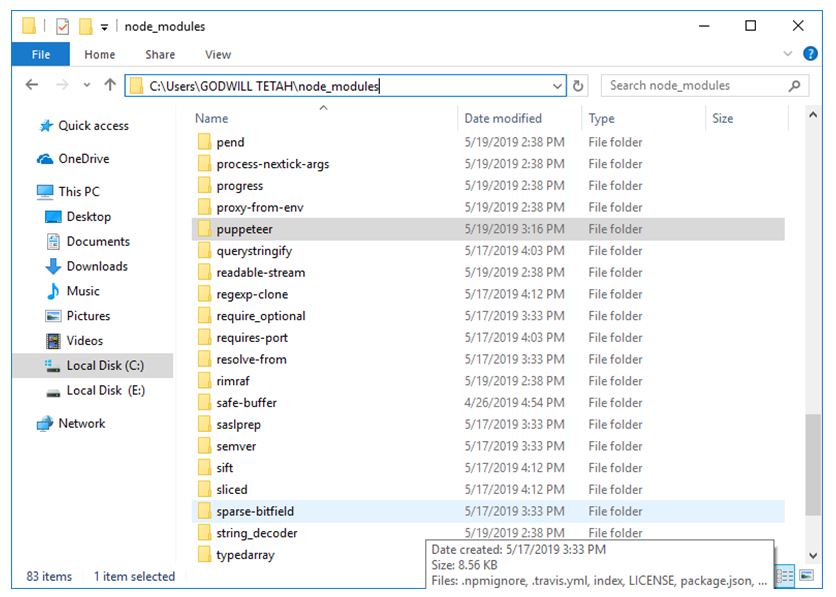

We have recently completed a migration to move the Puppeteer source code from JavaScript to TypeScript and as of version 7.0.1 we ship our own built-in type definitions. Ndb jest or ndb mocha (or npx ndb jest / npx ndb mocha)ĭebug your test inside chromium like a boss! Npm install -g ndb (or even better, use npx!)Īdd a debugger to your Puppeteer (node) codeĪdd ndb (or npx ndb) before your test command.

This example filters out all Network domain messagesĮnv DEBUG="puppeteer:*" env DEBUG_COLORS=true node script.js 2>&1 | grep -v '"Network'ĭebug your Puppeteer (node) code easily, using ndb Will be logged via the debug module under the puppeteer namespace. Now your debugger will be hit and you can debug in the test browserĮnable verbose logging - internal DevTools protocol traffic

In the newly opened test browser, type F8 to resume test execution In Chrome open chrome://inspect/#devices and click inspect Run node -inspect-brk, eg node -inspect-brk node_modules/.bin/jest tests Give it a spin: Getting Started Installationĭebugger await page.
Capture a timeline trace of your site to help diagnose performance issues. Run your tests directly in the latest version of Chrome using the latest JavaScript and browser features. Create an up-to-date, automated testing environment. Automate form submission, UI testing, keyboard input, etc. Crawl a SPA (Single-Page Application) and generate pre-rendered content (i.e. Generate screenshots and PDFs of pages. Most things that you can do manually in the browser can be done using Puppeteer! Here are a few examples to get you started: Puppeteer runs headless by default, but can be configured to run full (non-headless) Chrome or Chromium. Puppeteer is a Node library which provides a high-level API to control Chrome or Chromium over the DevTools Protocol. Just call the API and pass in the PDF URLs to join them into a single file and receive the generated result via webhook or via polling.API | FAQ | Contributing | Troubleshooting You can use the API to join your PDFs that are generated using Puppeteer too if they are hosted on a server. Bannerbear has an API to join PDF files when you generate PDFs from templates using Bannerbear’s PDF generation API. If you have multiple PDFs and want to join them into a single PDF, here’s an easy method to do so. to generate PDFs, so feel free to play around with the code. You can also modify the code to pass in different arguments to the function, eg. Margin: ,ġ-Run node index.js or node index.js url to convert the HTML content of a web page using its URL into a PDF.Ģ-Run node index.js file to convert the content of an HTML file into a PDF.







 0 kommentar(er)
0 kommentar(er)
